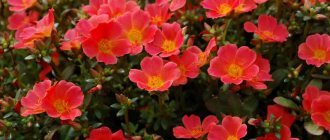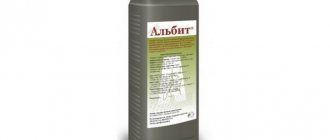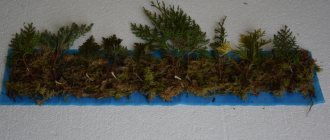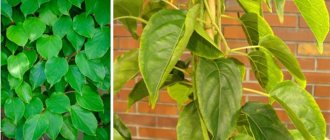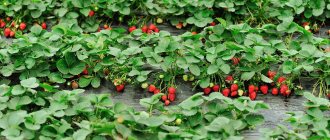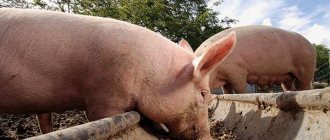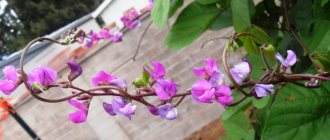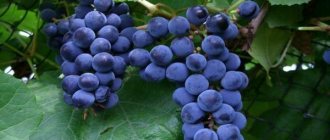Purslane (dandur) is used in culinary production and pharmaceuticals. Residents of Asian countries use young sprouts and leaves of purslane for cooking. The plant has a second name - dandur. Its aroma is characterized by spiciness, which goes well with meat dishes, stewed vegetables and soups. Young shoots also lend themselves well to pickling. Salads made from fresh purslane and vegetables are especially popular. The plant contains carotene and ascorbic acid. However, in the southern territories, purslane causes a lot of inconvenience to gardeners. Despite the large number of positive characteristics, everyone is trying to get rid of this weed, as it grows at a rapid pace.
What does purslane look like?
Purslane grass is considered a weed mainly in the middle climate zone, where it has firmly established itself in garden plots.
In North and South America and Asia, it grows everywhere in the wild. In the central and southern parts of Russia, garden purslane is represented mainly by annual species, since the crop is very heat-loving. The weed does not tolerate even light frosts and significantly slows down its development at temperatures below +20˚C. The photos provided by gardeners show that the purslane weed is a plant with a fleshy stem and leaves. The height of the stem itself is about 20-25 cm. Then the shoots begin to branch. They can reach a length of 35-40 cm and have a so-called anthocyanin color - green with areas of brown-red hues.
The photo of purslane in the garden clearly shows that the plant is covered with thick, fleshy leaves of a rich green color with faint white veins. The leaf blades have an obovate, elongated shape. Purslane blooms in mid-latitudes with small flowers, mostly yellow in color. The shape of the sepal resembles a water lily flower, only much smaller in size.
The root system of purslane is well developed. The main root is long, which allows it not only to tolerate a lack of moisture well, extracting it from the deep layers of the soil, but also to have a high chance of survival during weeding.
Types of purslane
In general, about 100 species of garden purslane are known, both wild and cultivated plants.
Interesting fact!
The herbaceous plant called purslane has been known for more than 4,000 years. In many countries, some varieties of purslane are still used today for preparing culinary dishes. It is also known for its medicinal properties. Its leaves contain large amounts of vitamin C, as well as vitamins A, B and E, and trace elements such as iron and magnesium.
In general, purslane is more common in regions with mild weather conditions, as it reacts negatively to lower temperatures. However, recently, due to climate change, it is increasingly found in the central and northwestern regions, and is beginning to pose a considerable problem for vegetable growers in the middle zone.
Features of reproduction
Purslane weed reproduces by seeds, layering and cuttings. One plant can produce up to 40 thousand seeds per season. It blooms almost continuously throughout the growing season, forming small round boxes with seeds.
If weeding is not done in a timely manner, the purslane seed pods ripen and open. A huge amount of seeds fall into the soil, which in turn are carried throughout the area by the wind or birds and, when favorable conditions arise, begin to germinate. Seedlings appear most actively at an air temperature of about 24-25 degrees Celsius and high soil moisture.
It is worth noting that the shoots sprouted by the purslane weed are capable of taking root in moist soil and forming new shoots. In addition, this ability to propagate by cuttings allows the grass to germinate again after digging or loosening the soil using a hoe or flat cutter.
What difficulties arise when fighting purslane?
It is hurricane propagation methods that do not allow us to effectively combat the garden weed purslane.
- In one summer, its numerous seeds can fill the entire garden.
- Rooting layering or cuttings will not allow full use of mechanical methods of controlling the weed purslane.
- Chemical methods may also not be appropriate if its spread begins in mid-summer. The fact is that seeds can lie in the ground for several years, waiting for favorable conditions for germination to occur. Most popular herbicides do not affect the seeds of purslane and other weeds.
Herb purslane
Purslane is a herb that is classified as a succulent, although it likes to grow in damp areas. In the natural environment it is found throughout the world, although India is considered the birthplace of the plant. It prefers sandy soil, but can begin to grow on other soils where there is high humidity or artificial watering.
Among the main characteristics of the plant, it is worth highlighting its moisture-loving nature. Purslane grows only in moist soils, although it can tolerate minor drought. But the plant quickly dies from frost, so it spreads mainly in the summer (Figure 1).
Figure 1. Purslane is not only a weed, but also a valuable medicinal plant
The subspecies of the plant that is found in the garden differs in appearance from the ornamental varieties. It has oval, fleshy leaves and inconspicuous yellow flowers, while the decorative purslane has pointed leaves and bright, multi-colored inflorescences. The spread of the weed is facilitated by its small seeds, which ripen in small boxes after flowering. This is why purslane so quickly takes over the free space of the garden.
Preventing the appearance of purslane
Of course, it’s easier not to fight the weed all summer when it has already grown, but to take measures to prevent it from appearing on the site. To do this you need to perform some actions:
- timely weed garden beds and the rest of the area on your site;
- remove all plant debris after weeding and in the fall after the end of the growing season, so that purslane shoots do not accidentally grow;
- dig up the ridges to at least the depth of a spade bayonet and turn the earth over so that the seeds go deep;
- sow early green manure, which will prevent weeds from germinating and taking root.
These methods are applicable not only in the case of purslane, but will help you fight other weeds on your farm.
It has been noticed that purslane does not grow well in the shade, therefore, if you do not plan to grow vegetables in the garden in the coming years, it is recommended to plant it densely with fruit trees and tall shrubs.
Expert opinion
Maria Vlasova
Gardener
Purslane can be a useful plant if grown specifically for food purposes or as a raw material for homemade medicines. But it can also be a nasty weed if it occupies the area it is not entitled to. If this happens, there are several methods for its destruction; any of them can be used in your garden plot.
How to get rid of purslane
It should be immediately admitted that getting rid of garden purslane in a garden plot is quite difficult. To do this, you will have to use both mechanical and chemical control methods.
Mechanical method
Most vegetable growers quite rightly believe that the best way to combat any weeds is weeding. However, the method, proven by many generations, may fail when fighting a weed such as garden purslane. For weeding to be effective, the following conditions must be met:
- carry it out until the garden purslane begins to flower;
- completely remove all plant roots;
- After weeding, remove all above-ground parts of the plant.
You should not put the plant in compost heaps, especially if it began to bloom before weeding. Using humus in subsequent years can only worsen the problem. Experienced gardeners recommend that when using green mass further, initially dry the purslane in the sun.
Attention!
You should not remove purslane weed using a flat cutter. It only cuts off the roots, but does not help get rid of the annoying plant. When weeding, it is better to give preference to hoes with three teeth.
Water + shovel
Wild purslane is tenacious. To get rid of this weed in your garden plot, you will have to use all methods in combination, including quite creative ones. Deep digging of the soil has always helped in the fight against weeds. Many weeds can sprout only if the seeds are at a depth of 1-2 cm, no more. This method will give results before the purslane shoots appear.
Garden purslane - propagation
The purslane plant is undemanding to the conditions of parthenogenesis. Gardeners practice cuttings, for this you need:
- cut off part of the stem with three buds;
- bury 1/3 into the ground;
- pour with warm water.
The main method of reproduction remains generative. The seed pods crack after ripening at the end of August, and the wind carries the planting material several hundred meters in the area. To prevent the fight against garden purslane from becoming a “new hobby,” it is necessary to periodically observe the berries. The finished fruits become large, oval-oblong, light green in color. Self-sowing is carried out in early spring, after the snow has completely melted.
Prevention measures
In general, in order not to resort to powerful drugs and not to spend the whole summer at the dacha weeding the beds, it is worth maintaining order in the garden plot. This applies not only to garden purslane, but also to other weeds. Prevention methods are simple:
- thorough removal of all plant debris from the beds after harvesting;
- pre-winter sowing of green manure plants;
- deep digging of the soil with removal of weed roots;
- timely weeding of beds and their removal from the site.
Then you won’t have to urgently fight either garden purslane or other weeds. If the area is not planned to be used for growing vegetables, you can plant it with berry or flower bushes. Purslane does not tolerate shade well and will gradually disappear over time.
Useful properties of purslane
The stems and seeds of purslane have medicinal properties, the plant is listed in directories of medicinal herbs. Contains ascorbic and nicotinic acids. The first acid helps strengthen the immune system, the second regulates metabolic processes in the body. Purslane also has antimicrobial, anti-inflammatory, anthelmintic, diuretic and regenerating effects.
Purslane has proven itself well in the field of cosmetology. It contains a large amount of vitamin A, minerals and trace elements. This useful complex helps with problem skin. Purslane is added by cosmetologists to various masks, which have a smoothing effect. It also stimulates healing. The juice of this weed relieves inflammation from the bites of bees, mosquitoes and even poisonous snakes.
Note. You can consume no more than 200 g of the plant per day. Irrational use can harm the body
Eating the plant is not recommended during pregnancy and lactation. Use is contraindicated in the presence of bradycardia, hypertension, and nervous tension. Purslane stimulates an increase in insulin and can cause an attack of hypoglycemia. When using a plant for medicinal purposes, all restrictions should be taken into account.
Irrational use can harm the body. Eating the plant is not recommended during pregnancy and lactation. Use is contraindicated in the presence of bradycardia, hypertension, and nervous tension. Purslane stimulates an increase in insulin and can cause an attack of hypoglycemia. When using the plant for medicinal purposes, all restrictions should be taken into account.
Purslane salad
The use of purslane in nutrition and medicine
Purslane has very juicy leaves that stimulate the appetite. They have a pleasant spicy and tart taste, similar to the taste of spinach or sorrel. The leaves are very good in combination with salad plants, and are also suitable for consumption on their own in boiled, stewed and pickled form. Purslane leaves and its green shoots must be cut off before the plant blooms. At this time they have the highest content of vitamins A and C.
Purslane has been known since ancient times. Even then, its cultivation was practiced for medicinal purposes. All parts of the plant are suitable for treatment, including seeds, except flowers. The substances contained in purslane can help in the treatment of diseases of the gastrointestinal tract, liver, kidneys, diabetes, and headaches.
This wonderful plant will help relieve inflammation of the bladder, reduce pain from hemorrhoids and enterocolitis. Purslane decoctions have a strong antimicrobial effect, so they can successfully treat dysentery and conjunctivitis. By regularly treating lichens and ulcers with this decoction, you can forever get rid of diseases that disfigure the skin.
In addition, with the help of purslane you can relieve various dizziness, cleanse the body (especially joints) of various toxins due to which arthritis subsequently develops, and you can also fight hypotension.
Purslane is indispensable in the treatment of such unpleasant sensations as peeling and itching that accompany psoriasis; with its help, purulent wounds quickly heal. Freshly squeezed purslane juice is a good hemostatic agent, which at the same time helps to normalize the function of the heart muscle.
With its help, you can get rid of such an unpleasant thing as warts, and purslane can also be useful in the treatment of a number of sexually transmitted diseases. The juice should be extracted from the leaves and stems of the plant and taken before meals three times a day, one tablespoon.
Decoctions and infusions of leaves and stems also help well in the treatment of cholelithiasis, reduce cholesterol and prevent the formation of atherosclerotic plaques.
Purslane seeds have an anthelmintic effect. An infusion of them is useful for colds: it lowers the temperature and relieves chills.
Purslane brings undoubted benefits. Its cultivation is useful for gourmets, for those in need of treatment, and simply for aesthetes.
You may be interested in the articles “Okra. Cultivation and care” and “Iga shrub. Growing and caring for it.”
Read Garden Affairs and improve your garden with us.
Send to your social network so as not to lose:
DelaOgorodnie.ru
How to fight a weed
How to get rid of purslane? Just like with other weeds, purslane is fought both chemically and mechanically.
It is very important here not to delay. Do not expect active growth of purslane in the garden, and especially the opening of its buds
Weed the plantings immediately and pull out the dandur as soon as you notice it. Purslane sprouts 3-4 times during the growing season. Especially often its sprouts appear when the temperature reaches +25 ℃.
Purslane, how else to get it out of the garden? After watering the garden, weeds immediately appear, because of this, inspect the beds the next day after watering or rain to pull out the weeds.
Mechanical methods of control
The weed purslane, mechanical control measures include regular weeding of the area, mulching the soil, deep digging of the soil, watering and pulling out the grass before planting garden plants.
Regular weeding
Purslane, how to deal with it by regularly weeding the area? Purslane can only be pulled out by hand. After watering, its seedlings are easily pulled out of the soil. The main thing is to pluck them out while they are still small. Starting from April 15, weed the area as often as possible. You should not tear or cut the stems, as then the roots begin to multiply intensively in order to strengthen themselves in the ground.
The seedlings that you tore out of the soil should be placed in a distant area that is illuminated by the sun. Wait for the uprooted plants to dry out. But then it's best to burn the weed.
Attention! You should not pull out the weed with a cultivator, pruner, or hoe, otherwise the parts of the grass that remain in the ground will take root and begin to grow faster.
Mulching
How to get rid of purslane in the garden by mulching the ground? This is a widely used method to remove weeds from an area. To combat dandur, you can mulch the beds with organic or inorganic materials. Organic matter is tree bark crushed into 1-5 cm pieces, rotted sawdust, fallen leaves, and grass. But organics have their drawback - they attract pests. Inorganic materials: dark film, pebbles, roofing felt, gravel. But roofing felt also has its downside - it emits harmful resins.
The mulch layer should be 5 cm thick. Mulch helps fight weeds. It also prevents the soil from decreasing in temperature, protects it from moisture drying out and erosion, and the soil remains loose longer after mulching. Under the straw or rotted sawdust, bacteria begin to multiply intensively, which destroy the dandur. Therefore, to combat purslane, it is best to mulch the soil with hay or straw.
Deep digging
The herb purslane, how to fight it by digging up the soil? Deeply digging up the soil in your area is another method to get rid of weeds. This is done early in spring and late in autumn. After digging, weeds do not grow as actively, since their seeds fall to great depths and are not able to germinate.
Purslane seeds will not germinate if they are at a depth of 20 cm. After digging, break up the lumps with a rake, remove weeds and roots, and apply fertilizer.
Watering before planting crops
How else to get rid of purslane in the garden? Another method is to dig holes 2 weeks before planting cultivated plants and water them. Water every day. After 3-4 days, dandur shoots will begin to appear in them. They are immediately pulled out and do so until planting.
How to remove purslane
Mechanical and chemical methods are used to control weeds.
The use of drugs is not always appropriate on site. Chemicals adversely affect the composition of the soil and crops. To improve the quality of the soil and to get rid of weeds, observe crop rotation and sow the area with continuous crops, for example, barley, oats or peas.
In places where purslane grows, onions, carrots and parsley are planted. They are able to suppress weed germination after one weeding.
Some of the methods on how to remove purslane sprouts and how to deal with them are mulching, weeding and digging.
Mulching
On this topic:
Areas where weed growth has been noticed are covered with a dense layer of mulch, 5-10 cm high. You can use mown grass, hay or compost as mulch. The mulch layer is covered with corrugated cardboard or dark garden film. In the absence of light and due to compaction with materials, even hatched seeds will not be able to develop.
Purslane grows actively in well-lit areas, so by shading not only the seeds, but also the places where it grows, you can gradually remove the weed from the garden.
Weeding
Weeding is carried out manually after loosening and with the obligatory uprooting of the plant. The purslane weed is easily removed from the ground, and unselected plant debris quickly resumes its growth. Purslane, cut into pieces, takes root by releasing aerial roots. Therefore, torn plants are not left between rows or on the soil surface.
A supply of moisture accumulates in the roots of purslane, which allows it to remain viable for a long time. To prevent re-rooting from occurring, all plant residues are burned or taken away from the site. Only dried weeds can be used in compost pits. Dry the purslane, torn from the soil, under the sun, spreading it on a film so that it does not touch the ground.
Purslane tends to actively germinate after watering. This ability is used to provoke germination - another method for removing purslane from the site. The place where the weed grows is intensively watered several weeks before planting vegetable or flower crops and then the emerging shoots are carefully weeded out.
Digging
In order to remove purslane from the garden, the places where it appears are dug deeply. The seeds of the plant germinate only close to the surface. Therefore, after digging, they will end up in the lower soil layer, from where they will not be able to germinate. It is recommended to do deep digging in advance of planting vegetables - in the fall or early spring, so that the work of beneficial soil bacteria in the soil layers has time to resume.
Compliance with crop rotation and a combination of methods to get rid of the weed will lead to a decrease, and then the complete disappearance of purslane from the garden.
What does the beneficial weed purslane look like?
Garden purslane, the medicinal properties of which will be discussed in the article, has thick stems, most often creeping along the ground, or semi-erect, green in color with a reddish tint. Their length can reach 50-70 cm. The leaves are fleshy, obovate in shape, arranged in pairs. Their color depends on the level of soil moisture and varies from bright green to dark green. It blooms with small white or yellow flowers throughout the summer, producing capsules with numerous seeds.
Favors damp places. Banks of rivers or lakes. Found near wetlands. Recently, it has increasingly appeared in vegetable gardens and garden plots, especially if they are located in low places.
Composition and value, calorie content of purslane
We can talk for a long time about the chemical composition of the beneficial weed purslane. Its leaves are 90% water and have a very low calorie content, only 16-18 kcal per hundred grams of product. At the same time, they contain vitamins A, C, E, complex carbohydrates, proteins, tannins and analgesics.
Interesting fact!
In Arab countries, purslane was not considered a weed, but was widely used as an anti-inflammatory, antimicrobial agent capable of removing toxins from the body. It was widely used to treat bites of poisonous snakes and insects, and battle wounds.
Description of purslane
Purslane (Portulac aoleracea) is an annual herbaceous plant. It has creeping or ascending reddish stems 10-50 cm long, glabrous, smooth, fleshy, branched from the base. The leaves are small, dark green, sessile, spatulate, obtuse, tapering towards the base. The arrangement of leaves is alternate at the bottom, almost opposite at the top. The flowers are bisexual, small, yellow, solitary or collected in bunches of 2-3, located in the branches of the stems and axils of the leaves. The corolla consists of 5-9 free or fused obovate petals attached to a bifid calyx. The fruit of Portulaca oleracea is a single-locular multi-seeded capsule, cartilaginous or membranous, opening transversely or with 3 leaves. The seeds are very small, black-gray, matte.
India is considered the birthplace of the annual plant. Purslane grows in Central Europe, the Mediterranean, the Balkan Peninsula, Asia Minor and Central Asia, Iran, Nepal, China, Mongolia, and Japan. In Russia, the plant is widespread in the European part, the Caucasus, Altai, and the Far East. Purslane grows in fields, garden plots, along the edges of roads, river banks, and around villages.
Attention! The name purslane is associated with the peculiarity of the opening of the capsules. Translated from Latin “portyla” means “gate”. In Russian everyday life, the weed is called “crassula” or “rugs”, in Armenian – “dandur”, in Azerbaijani – “perperek”.
Ways to combat purslane in the garden
The weed blooms with the onset of summer and continues to bloom until early autumn. Its small yellow flowers contain almost 3 thousand seeds. They remain viable for up to 10 years, so getting rid of the plant is not so easy.
Like any other weed, purslane emerges after the air temperature rises to 25 degrees, after rain or watering. Has the ability to develop immunity to herbicides and chemicals used
Therefore, it is important not to delay harvesting purslane to prevent it from blooming and growing. During a season, the plant can sprout up to 4 times
Important! Purslane has the ability to take root with leaves and cuttings. Therefore, after pulling out the plant must be removed from the site so that aerial roots do not form.
How to get rid of purslane in the garden forever? There are two ways:
How to get rid of purslane weed mechanically
Regular weeding, mulching and deep digging of the garden should be carried out. The method involves manual removal of weeds. Using tools such as a garden hoe will not achieve the desired result and will only make the situation worse. The plant has a strong branched root system. Frail sprouts are easily pulled out of moist soil. If you pull out just the purslane sprout, the injured root will accelerate its growth to restore strength. This will cause the weed to grow.
Note. The torn purslane is removed away from the garden space, allowed to dry and burned.
Mulching is considered one of the excellent ways to remove annoying weeds. Organic and other materials are used as mulch.
Getting rid of purslane mechanically
- Sawdust.
- Wood bark.
- Leaves.
- Mown grass.
Inorganic mulching materials:
Organic mulch is inferior to inorganic mulch and attracts pests such as slugs.
Note! A layer of mulch should be laid at least five centimeters. In addition to protecting against various weeds, mulching helps the soil maintain looseness and moisture for a longer time.
Mulch also helps the soil retain heat and protects it from overheating.
In addition to protecting against various weeds, mulching helps the soil maintain looseness and moisture for a longer time. Mulch also helps the soil retain heat and keeps it from overheating.
The principle of mulching: bacteria develop under the cover and kill purslane. For each weed, you can choose your own type of covering material. Purslane is poorly affected by hay and straw mulches.
To maintain cleanliness in the garden, you should carry out the deep digging procedure twice a year: before the start of winter and after it. After digging, the soil must be cultivated.
Important! Weed seeds located at a depth of 20 centimeters do not germinate
Chemical method
It happens that the weed in the area is so rooted that mechanical methods do not help. For chemical treatment, herbicides that have a continuous effect are used. This treatment is best done after the autumn harvest.
For purslane, a mixture of two drugs is used: Roundup + Pyramine, Octigen or Lapis lazuli. The drugs should be diluted without deviating from the instructions.
Additional Information. The drug Roundup is effective at a concentration of 1-3% solution. Solutions of lower concentration will be ineffective.
The active substances of the biological product settle on the leaves of the plant and penetrate into its tissue. Only clean water should be used. The presence of impurities in the water in the form of clay or silt will reduce the effectiveness of the solution. You should also take into account the hardness of the water. If the hardness level is high, the dosage of the biological product is increased, but the solution consumption is reduced. For hand sprayers, the solution rate is 300-500 liters per hectare.
The drug Pyramine contains the active substance chloridazone. The consumption rate is 2-3 liters per hectare. Herbicide Lazurit is made on the basis of metribuzin. Up to 1.5 kg of the drug is consumed per 1 hectare. Octigen - 2,4-dichlorophenoxy-acetic acid and chlorsulfuron - use 200-300 liters per hectare.
Spraying purslane is carried out on a sunny day. In cases of precipitation within 10 hours after treatment, the procedure is repeated.
If the weed is properly destroyed with herbicides, after 14 days the plant will wither and die. The weed can also be removed in the summer at high temperatures. In these cases, the chemicals must be handled with care.
It is important not to get into cultivated plantings, otherwise they will die along with the weeds
What types of purslane are there?
Purslane is a genus of plants in the Portulaca family, which includes approximately 100 species of annual herbaceous plants, a significant part of which are succulents. In this article, out of all the variety of species, we are interested in purslane (Portulaca oleracea), as one of the most common weeds.
On the territory of the Russian Federation it is found in all regions with a warm climate. Recently, purslane has been successfully growing in the Non-Chernozem zone. And even in the Moscow region it reproduces by self-sowing, despite the harsh winter conditions.
Large clumps of purslane occupy river banks, open wet areas with sandy loam soils, and quickly spread throughout gardens, fields, and home areas.
Purslane stems, 10-40 cm long, are fleshy, smooth, rounded cylindrical in shape, and can be hollow inside. The color of the stems is reddish brown. Intertwined, they form a multi-branched, creeping plant.
The leaves are green in color with a waxy coating and a characteristic wide leaf blade, arranged oppositely (upper) and spirally (lower).
Purslane flowers are sessile, small, solitary, bisexual, located in the axils of leaves or branches of stems. The petals of the corolla are only yellow, of varying color intensity, shiny. Flowering is long lasting and covers the period from June to August.
The fruit of purslane is a multi-seeded capsule, round or slightly elongated. When the seeds ripen, a transverse crack appears in it, through which the seeds are scattered throughout the soil. The fruits ripen in August-September. All above-ground parts of purslane have a pronounced sour taste.
Features of purslane that made it one of the most malicious weeds:
- One overgrown purslane bush is capable of producing up to 3 million viable seeds per season, which remain viable for up to 40 years (despite their miniature size);
- Unripe seeds of cut purslane are ripened in boxes left on the field, and the next year they sprout vigorously;
- All vegetative parts of purslane have a high ability to take root, forming aerial roots on the fractures of leaves, stems, nodes (especially if the area is irrigated and constantly moist), penetrating the latter into the soil;
- Cutting adult specimens at soil level provokes the growth of dormant buds (both from the damaged mass of above-ground organs and those remaining at a depth of 2–3 cm).
The flowering of purslane is long and covers the period from June to August. PETER GREENWOOD
Useful properties of Portulaca oleracea
Hippocrates, Arab and Indian healers, and the ancient Egyptians knew about what purslane is, what benefits it brings, and recipes from it. Purslane was once valued for its magical and healing properties. Garlands were woven from the grass to protect against evil spirits; it was used to treat scurvy, hemoptysis, kidneys, liver, and to cleanse the body of venereal diseases.
Important! Modern research confirms the ability of purslane to help with diseases associated with a lack of vitamins and microelements. The composition of the herb includes carbohydrates, alkaloids, minerals, organic acids, vitamins of groups C, B, PP, K
The sourish taste of the plant is due to the presence of malic and oxalic acid in the tissues. Modern healers use it to heal wounds, treat diabetes, burns, as an antipyretic, anti-inflammatory, and diuretic.
The composition of the herb includes carbohydrates, alkaloids, minerals, organic acids, vitamins of groups C, B, PP, K. The sourish taste of the plant is due to the presence of malic and oxalic acid in the tissues. Modern healers use it to heal wounds, treat diabetes, burns, as an antipyretic, anti-inflammatory, and diuretic.
Vegetable purslane and medicines made from it, consumed in excess, can cause harm to pregnant and lactating women. There are contraindications for taking medications that contain purslane components; they should not be used by hypertensive patients, patients with heart rhythm disorders, or those with allergies to the plant.
Use in cooking
The low calorie content (up to 20 kcal per 100 g) of raw purslane leaves and stems has made them a sought-after ingredient for use in fasting diets. Not only tender young plants are used for food. Coarsened old shoots are pickled, stewed, soups are cooked with them, casseroles are made, and salads are prepared.
Medicinal tincture of purslane shoots
Use in food
Since purslane grows very successfully on any soil, often even without human intervention, it can be used as food (Figure 7).
For example, you can make a delicious salad from fresh weed leaves by adding a few fresh mint leaves, two cloves of garlic and seasoning the finished dish with yogurt. Casseroles are often prepared from purslane. To do this, the weed leaves are poured with clean water, boiled for 10 minutes, and then the excess liquid is allowed to drain.
Figure 7. You can make a salad from purslane.
Next, cut the onions into cubes and fry them in vegetable oil. After this, the greens are placed in a baking container, poured with beaten eggs and sprinkled with grated cheese. You can salt and pepper the dish as desired, and to ensure it is fully cooked, just bake it for 20 minutes.
You will find another unusual recipe for making purslane in the video.
Exhaustive
Since the aboveground part of the plant and the root system are closely interconnected, if one of the parts is damaged, the other part of the plant also suffers. If you constantly cut off the entire above-ground part, the plant will need to expend a lot of energy to restore it. Such constant struggle will deplete the plant's strength and it will die. For many plants this procedure turns out to be disastrous, but for very hardy ones it is not, and they continue to grow. But, nevertheless, this method is effective, and much easier than constantly digging up the soil.
The main thing when mowing is to be careful not to damage the roots.
Features of purslane
Previously, purslane weed was added to dishes and used as medicine. And in Asia, to this day they prepare food from purslane, using young shoots and upper leaves. They are used as a seasoning for meat, added when stewing vegetables, boiled and dried, as purslane gives off a spicy aroma. The fleshy shoots are also pickled. Asians are very fond of purslane salad, as the plants contain large amounts of carotene and ascorbic acid.
Purslane is also called dandur. In nature, it grows in Central Asia, the Caucasus and southern Europe. The culture spreads throughout gardens and orchards, its thick stems penetrating the soil. The brownish-red stems are up to 20 cm in height. By the foliage you can understand which variety you have grown. Wild purslane has round and fleshy leaves. And the cultivated one has sharp and elongated leaves.
From June to September 15, the plant begins to bloom. And when the seeds ripen, problems begin for gardeners and gardeners.
Purslane weed, as seen in the photo, has small, inconspicuous yellowish flowers that grow at the base of branches and foliage. When the seeds appear, there are more than 3000 of them in 1 g. They scatter throughout the area and can germinate for another 10 years. Therefore, the gardener is faced with the question of how to remove purslane.
Purslane - planting and care, photos of garden plants
The plant is unpretentious to the soil and undemanding in care. It grows quickly, covering the soil with a green carpet. It is enough to plant it once, and the crop will reproduce by self-seeding.
In the climatic conditions of Russia, dandur can be sown directly into the soil. But if you want it to bloom at the beginning of summer, you should choose the seedling method:
- sowing is carried out in late February - early March;
- the soil in containers should be light and permeable;
- small seeds are mixed with calcined sand and sown in a path in a container with soil (there is no need to cover the crops with soil, just press down with a plank);
- the ground is moistened with a spray bottle and covered with film;
- containers are placed in a warm place, ventilated once a day, and moistened as necessary.
Friendly shoots will appear in 12-14 days. The seedlings are moved to the windowsill, and when the second leaf appears, they are picked. The sprouts are planted at a distance of 5 cm and slightly deeper.
Before planting in the garden, seedlings must be gradually accustomed to street conditions. Containers with seedlings are first taken outside for 20-30 minutes, then the time they spend in the open air is extended daily. After a week, you can start transplanting. At the time of planting, the soil should be warmed up to at least 15-18 °C.
Site selection
Dandur will grow in any well-sunny, non-boggy soil. It should be borne in mind that on depleted soil it will not become juicy and fleshy enough to be used for culinary purposes. Therefore, to grow edible purslane, select an area with fertile soil or fertilize the ground in advance with organic substances - rotted manure, bird droppings, humus.
Transfer
Important! After planting, each plant is watered, and the soil around each bush is compacted. Purslane grandiflora is a heat-resistant plant, therefore, in order to achieve abundant flowering, it must be planted in the most illuminated place, keep this in mind! It is desirable that the place where the purslane will grow be dry and warm, so I try to plant the plant on hills, not far from the southern wall of the house, since the flowerbed is located very well
Purslane grandiflora is a heat-resistant plant, therefore, in order to achieve abundant flowering, it must be planted in the most illuminated place, keep this in mind! It is desirable that the place where the purslane will grow be dry and warm, so I try to plant the plant on hills, not far from the southern wall of the house, since the flowerbed is located very well.
Purslane in a flower garden. Photo from ogorod.ua
Purslane is so thermophilic that already at 10°C and below its leaves begin to fall off, so seedlings can be planted in open ground only closer to mid-June. When planting, maintain a distance between plants of at least 15 cm.
Application
Food use
Leaves, tops of stems and flowers are eaten. They are used in salads, sauces, soups, and as a seasoning for various meat and fish dishes.
Widely used as a spice and vitamin plant. Young leaves and stems (before flowering) are eaten raw and cooked. They are used to prepare salads with vegetables and olive oil. Systematic use of this salad reduces cholesterol levels and reduces the symptoms of atherosclerosis. Purslane is used to prepare soups and seasonings for meat dishes. For the winter, purslane greens are salted and pickled.
The plants are washed, then blanched in water at 90-100°C for 3-5 minutes, placed on a sieve and allowed to drain. Place a bay leaf and a clove of garlic, cut into pieces, at the bottom of half-liter jars. The purslane is placed in jars, having previously been cut into pieces 4-6 cm long. Add a tablespoon of 2% vinegar essence and salt to the water. The jars are sterilized in boiling water for 20 minutes and sealed.
Purslane medicinal properties and medicinal uses
It has a strong antiscorbutic, anti-inflammatory, diuretic effect. Fresh purslane leaves help relieve itching from insect bites. Helps with decreased potency. Reduces blood sugar levels.
Collection and processing of medicinal raw materials
Medicinal raw materials are stems and leaves, and sometimes seeds. Juice has the greatest activity. It can be prepared either from a fresh plant or from stems and leaves salted for future use, after soaking them in cold boiled water.
Application in official and folk medicine
The fresh plant and preparations made from it have anti-inflammatory, diuretic, choleretic, and mild hypoglycemic effects. The presence of norepinephrine increases blood pressure during hypotension. Fresh purslane juice is indicated for inflammatory diseases of the kidneys, liver and bladder mucosa. It is used for gonorrhea, trichomonas colpitis, syphilitic joint lesions and bacterial dysentery. It is an antitoxic agent against the venoms of snakes and insects. Crushed leaves have a wound-healing effect. Purslane seeds are used to treat lichen planus.
The juice is prepared in the usual way and boiled for 2-3 minutes. Take 1 tablespoon 3 times a day after meals.
To prepare a decoction of seeds, pour 2 teaspoons of the raw material into 1 glass of hot water, boil in a closed enamel container in a water bath for 10 minutes, cool and filter. Use to wash affected areas of the skin 4-5 times a day.
How to fight a weed
Since this weed with highly branched, creeping shoots can survive in the worst conditions, it is better to start fighting it before flowering and seed formation. After all, if you miss this moment, then it will be very difficult to remove purslane. You need to get rid of the weed as quickly as possible.
Weeding the garden
This method of fighting is the simplest but most effective. It is produced by hand by pulling out the grass by the roots. Then the collected plant is laid out in a sunny place to dry. The dried weed is disposed of.
Mulching the land
For mulching, the area is covered with hay, straw or sawdust to a height of about 5 cm. Remnants of roofing felt, cardboard or black film are also widely used for these purposes. The main task is to prevent the penetration of sunlight and life-giving moisture into the weed. In such conditions it quickly dies.
Digging up the ground
Enhanced watering
Experienced summer residents have found a way to get rid of purslane in the garden in a rather unconventional way. Presumably 10 days before the pest emerges, the clogged area is dug well and watered abundantly for several days.
Chemical attack
If your site is very neglected, and the weed is already a permanent resident, then the methods described above will not help. The only effective way to destroy purslane is to use herbicides. It is better to carry out processing after harvesting, in the fall.
To treat purslane with chemicals, the drug Roundup is diluted in a duet with one of the following agents: Octigen, Pyramine, Lapis Lazuli. Initially, Roundup is diluted in water, and then one of these drugs is added to it.
No matter what beneficial substances this plant has, it interferes with the normal growth of crops. Any method of combating purslane discussed above is good for removing the pest from the garden. Which one is right for you depends on the degree of purslane infestation in your summer cottage.
How to get rid of purslane? Just like with other weeds, purslane is fought both chemically and mechanically.
It is very important here not to delay. Do not expect active growth of purslane in the garden, and especially the opening of its buds
The weed purslane, mechanical control measures include regular weeding of the area, mulching the soil, deep digging of the soil, watering and pulling out the grass before planting garden plants.
Regular weeding
Purslane, how to deal with it by regularly weeding the area? Purslane can only be pulled out by hand. After watering, its seedlings are easily pulled out of the soil. The main thing is to pluck them out while they are still small. Starting from April 15, weed the area as often as possible.
The seedlings that you tore out of the soil should be placed in a distant area that is illuminated by the sun. Wait for the uprooted plants to dry out. But then it's best to burn the weed.
Attention! You should not pull out the weed using a cultivator, pruner, or hoe, otherwise the parts of the grass that remain in the ground will take root and begin to grow faster
Mulching
Organic matter is tree bark crushed into 1-5 cm pieces, rotted sawdust, fallen leaves, and grass. But organics have their drawback - they attract pests. Inorganic materials: dark film, pebbles, roofing felt, gravel. But roofing felt also has its downside - it emits harmful resins.
The mulch layer should be 5 cm thick. Mulch helps fight weeds. It also prevents the soil from decreasing in temperature, protects it from moisture drying out and erosion, and the soil remains loose longer after mulching.
The herb purslane, how to fight it by digging up the soil? Deeply digging up the soil in your area is another method to get rid of weeds. This is done early in spring and late in autumn. After digging, weeds do not grow as actively, since their seeds fall to great depths and are not able to germinate.
Purslane seeds will not germinate if they are at a depth of 20 cm. After digging, break up the lumps with a rake, remove weeds and roots, and apply fertilizer.
How else to get rid of purslane in the garden? Another method is to dig holes 2 weeks before planting cultivated plants and water them. Water every day. After 3-4 days, dandur shoots will begin to appear in them. They are immediately pulled out and do so until planting.
Fighting methods
There are several ways to do this:
- mechanical;
- weeding;
- mulching;
- digging;
- urgent watering;
- chemical.
First, we’ll talk about how to get rid of purslane using environmentally friendly methods, and we’ll talk about destroying it with herbicides at the end of the article.
Mechanical
The plant is propagated by seeds and cuttings. Therefore, it is most suitable for destroying purslane. This method is that you must promptly notice the weed on your territory and get rid of it by pulling it out manually. Everything must be done carefully and correctly. You should carefully remove purslane from the ground, without missing a single small piece, because each of them can take root, giving life to a new plant. We leave the uprooted dandur in the sun, having first laid some available material on the ground so that its shoots do not touch the soil, not being able to take root.
Crassula stems are fleshy and very juicy, so they will take some time to dry.
Weeding
You should not use a hoe, flat cutter or cultivator to combat purslane. They chop it into small pieces, which quickly take root in the ground and the amount of weed doubles.
Mulching
Provides invaluable assistance in the fight against unwanted vegetation, including purslane. For mulching, hay, straw, mown grass, sawdust, peat, sunflower seed husks, buckwheat, and much more are used. In this way we not only fight purslane, but also fertilize the soil. The area free from planting, overgrown with a rug, is covered with roofing felt, cardboard, dark film, boards to block the access of moisture and light. Mulching is popular among gardeners: there are almost no weeds, and the soil is loose and moist, so the savings in effort and time are obvious.
The thickness of the mulch layer should be at least 5 cm.
Don’t forget to pick out the stems and roots of the chicken leg from the ground.
Urgent watering
Experienced summer residents, knowing where the purslane chose its place in the sun last year, before its appearance (about a week), water this place abundantly several times, having previously dug it up. Do this at least once a day. In about a week, the grass will begin to actively sprout and grow. It must be carefully collected by hand, trying not to leave any plant debris, and removed from the garden. Timely measures taken to destroy the weed in compliance with all the rules of agricultural technology always bring tangible success.
Chemical
Now let's talk about the use of artificial means. The active colonization of the territory by purslane encourages summer residents to resort to the use of continuous herbicides
These drugs help get rid of it faster. They should be used in the fall, when the harvest has already been harvested.
The drug Roundup, made on the basis of glyphosate, has the greatest chemical activity against purslane. We talked in detail about this herbicide and its properties in one of our previous articles. Roundup is combined with other herbicides.
Suitable for these purposes:
Each drug contains a different active ingredient. Their basis is:
- for Lapis lazuli – metribuzin;
- for Pyramine – chloridozone;
- for Octigen - a combination of ethylhexyl ether and chlorsulfuron.
To prepare the solution, Roundup is first placed in water, and then another product is added. Doses are used as specified in the instructions for use of the drugs. The resulting liquid is thoroughly sprayed onto the weeds. You should choose calm, sunny weather. On paths and along fences, purslane is treated with herbicides at any time. Just make sure that the solution does not get on crop plants.
If it rains or dew falls within the next 10 hours after spraying, the procedure must be repeated.
When treated with chemicals, the rug will die in 10-15 days.
Purslane is a malicious weed that strongly depresses cultivated plantings, so you can choose a way to combat it at your discretion, but it is better to solve this problem in a complex way, combining agricultural practices and special chemicals, although you should try to do without them. Good luck to you!
Send to your social network so as not to lose:
Description of the plant
There are two types of purslane: wild and cultivated. Gardeners nicknamed the wild variety, which brings a lot of trouble, chicken leg.
As the plant grows, it becomes like a carpet. The plant is able to grow in poor soils; the main requirement is a large amount of sunlight.
Note . To distinguish wild purslane from cultivated one, you should look at the shape of the leaf. In wild purslane it is round, while in cultivated purslane it is long and sharp. The cultivated variety is called "vegetable purslane".
This plant is an annual plant and does not tolerate frost. Propagated by seeds, vegetatively. What does purslane look like? The plant has thick stems and a powerful root system. The height of the stem can reach 20 cm. The length of the shoots reaches 45 cm. The stems are highly branched, the leaves are wedge-shaped, the flowers are bisexual, yellow in color. The root is characterized by weak branching. The plant has fruits that resemble boxes containing small seeds. After ripening, these fruits dry out and crack, spreading the seeds two meters around them.
Medicinal properties
The beneficial characteristics of the plant are due to its rich chemical composition. Despite its unpresentable and inconspicuous appearance, the chemical composition of purslane is so rich that few other plants can compare with it in this regard. Not everywhere purslane is recognized as a weed: there are countries where the plant is specially planted in order to obtain excellent natural raw materials for medicinal potions.
Most of the nutrients are concentrated in young shoots, as well as in foliage. The leaves contain a lot of so-called carotenoids - substances that help synthesize vitamin A. Due to the rich content of these substances, purslane is widely used in cosmetology - after all, vitamin A has a noticeable positive effect on appearance. In addition, it is also useful for vision.
Purslane is also capable of providing:
- diuretic;
- antimicrobial;
- antioxidant;
- antiulcer;
- laxative;
- anti-inflammatory;
- antitoxic;
- restorative;
- antihelminthic effect.
The plant contains such acids as nicotinic and ascorbic that are useful for the human body. It is known that vitamin C is indispensable for maintaining immunity, and nicotinic acid helps normalize metabolic processes. In addition to these two most famous acids, purslane also contains lesser known acids: phenolocarboxylic acids, gallic acids, mustard acids and others.
Grass tissue contains a lot of carbohydrates, and natural ones - this is a valuable energy and fuel material. Carbohydrates are represented by sugars: glucose, maltose, fructose. And thanks to the presence of coumarins - specific anticoagulant substances, purslane is able to effectively fight thrombotic formations in blood vessels.
Greens also contain flavonoids with steroids, alkaloids, saponids, and fatty acids that are essential for metabolic processes. It contains a lot of other biologically active substances.
To prevent purslane from multiplying
The seeds of this plant are surprisingly tenacious and can remain viable in the ground for up to 40 years. Large purslane bushes can produce up to 3 million small seeds per season, which are effectively scattered in cracking capsules. You should not leave collected plants on the site if they have green boxes. The seeds ripen well in them, and already this year, at a temperature of 25 to 30 degrees, shoots appear again.
However, out of millions of sprouted seeds, only a few survive to bear fruit. Purslane is a fragile plant that is afraid of spring frosts when young. However, adult specimens grow well if they are cut at soil level. They produce powerful lateral growth from dormant buds, which are located at a depth of up to 2 cm from the surface of the earth. That is why it is better to pull out plants by the roots.
Another reason why you should remove pulled weeds from the site is the ability of purslane to take root with green cuttings and leaves. In wet weather, shoots broken off at a node form aerial roots and take root well.
Valuable green vegetable crops - varieties Makovey, Paradox, Svetlyachok, Kuzminsky
Purslane can be used as an edible plant. In addition to its unusual taste, it has many beneficial properties due to its rich composition. For cooking you can use the following varieties:
- Makovei. Contains a large amount of vitamin C and Omega-3 acids, as well as iron, zinc, copper, potassium, calcium, sodium and many other substances. Makovey has a spicy, sweetish taste, so it is added to fresh salads and sauces. The plant grows well in warm climates. Only the upper leaves are used for cooking.
- Paradox. This variety also contains large amounts of vitamin C, which is why it has a sour and slightly pungent taste. The herb is usually pickled and served as a side dish for fish or meat with vegetables. For growing, you need to choose sunny areas and not be overzealous with watering.
- Firefly. It has a spicy, sweetish-salty taste, so it is used both fresh and pickled. Firefly is included in salads and sauces, as well as soups. The variety is characterized by high productivity.
- Kuzminsky. This is an early-ripening crop that ripens within 15 days after planting. During the season, several harvests can be harvested from one bush. The plant has a neutral taste, with a slight bitterness. In the kitchen it is used both fresh and pickled. The variety is unpretentious, but does not tolerate cold weather.
About the dangers of a hoe
You should not try to get rid of weed thickets with a hoe. In fact, this tool only propagates purslane. We will tell you how to withdraw it below.
A similar situation occurs when trying to use a cultivator. All methods by which purslane is divided into parts do not destroy this weed, but increase its number on the site. Cleaning cut bushes with a rake reduces the number of twigs and leaves left on the site, but does not make it possible to get rid of them completely.
The benefits of purslane
Purslane is known not only as a weed. The fleshy leaves and shoots of the plant contain: fiber, vitamins, ascorbic and nicotinic acids. In cooking, it is used to prepare spicy salads, seasonings for soups and meat dishes, and the weed is also used in folk medicine.
Purslane is an unusual plant of the Portulaca genus. On the one hand, it is a difficult to remove weed, on the other hand, it is a useful herb used in cooking and alternative medicine. There are about 200 varieties of purslane, divided into wild and cultivated. The latter are grown as a vegetable, salad plant or flowers. In Russia, one of its varieties is ubiquitous - purslane. For most gardeners, this is a weed that causes a lot of trouble. Removing garden purslane is not an easy task.
Indications for use
The medicinal properties of this garden herb have been known since antiquity. Including, in historical documents there are notes by Hippocrates and Pliny about the benefits of purslane. Until now, in Eastern countries it is believed that even simple walking barefoot on this grass has a beneficial effect on a person.
In the regions of Transcaucasia and the countries of Central Asia, purslane is grown in gardens along with other vegetable plants and herbs. It is not difficult to cultivate: the plant is surprisingly unpretentious and feels great even in poor soil. However, there is one peculiarity: purslane will grow well only where the soil does not contain chemical fertilizers.
Indications
Medicines from this plant can help with a wide range of diseases. Including:
- for skin problems, psoriasis and neurodermatitis;
- if necessary, restore blood glucose levels, as well as cholesterol;
- for problems with the heart and blood vessels;
- asthmatic attacks, other respiratory diseases;
- in case of inflammatory problems with the genitourinary organs;
- to reduce sugar levels;
- if there are diseases of the liver, gall bladder;
- with inflammation of the gums, conjunctivitis of various natures;
- to expel worms and roundworms;
- for stopping tumors from bee stings.
Thanks to the diuretic effect, tinctures with purslane effectively help with urine retention in the body. The plant also helps to lower blood pressure - a significant aid for hypertensive patients. The effect is associated with the removal of excess fluid from the body.
Thanks to the presence of antioxidants in its composition, purslane can prolong the youth of the body. Antioxidants bind harmful free radicals responsible for aging. The positive effect is observed at the cellular level.
Among the skin diseases that purslane can cure is lichen. An extremely unpleasant and contagious disease can be quickly stopped thanks to external remedies from this healing plant.
There is evidence that even some sexually transmitted diseases were successfully cured thanks to infusions and decoctions of purslane.
Purslane can also help get rid of annoying and unpleasant warts. The herb is used to get rid of flatulence, insomnia, and can even help with diabetes mellitus (in a mild form).
